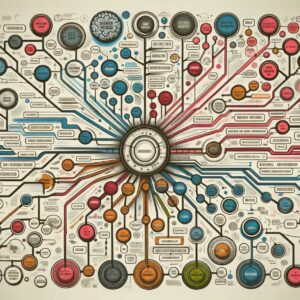
08 Mar Mind Mapping Tips for Teen Students
TEEN MIND MAPPING 101:
Visualize Your Path to Success
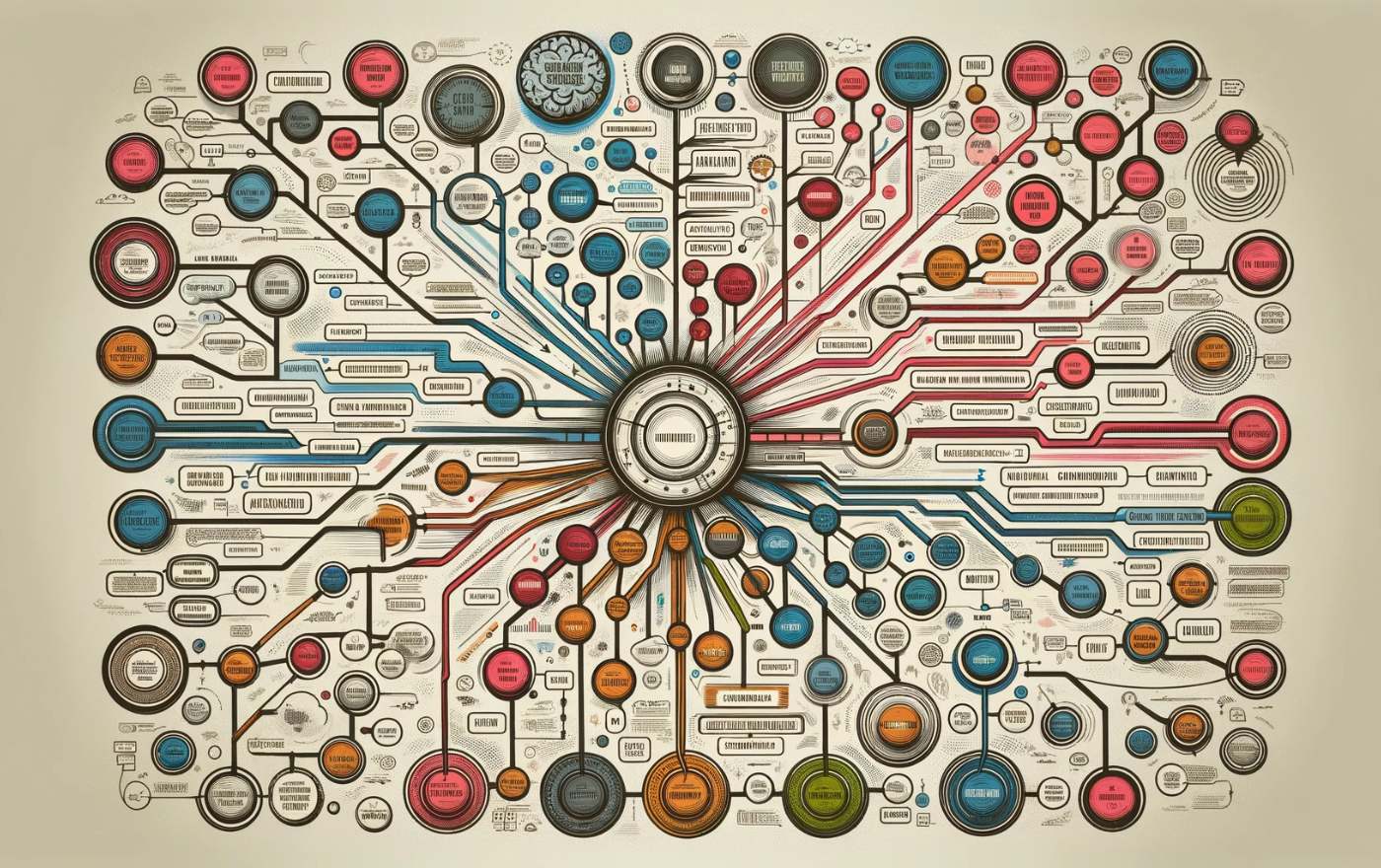
You’re a teenager with a million thoughts racing through your brain daily. What classes to take, who to hang out with, what you want to be when you grow up. It’s a lot to juggle. But what if there was a simple way to dump all those thoughts out of your head and onto paper so you could see them laid out right in front of you? Mind mapping is that secret weapon to help you visualize your ideas and make better decisions. In just a few simple steps, you can create maps to plan for big tests, sort through social drama, and unlock what you’re passionate about pursuing. Whether it’s picking colleges or careers, mind mapping gives you an at-a-glance view so you can stress less and succeed more. Let’s dive in!
What Is Mind Mapping?
Mind mapping is a visual technique for organizing your thoughts and ideas. It helps you think and learn more effectively. Mind maps are diagrams that start with a central topic and branch out to related topics and ideas.
▶ The center of the mind map contains your main topic or idea. From there, branches extend to related subtopics, and more branches extend from these subtopics.
▶ This allows you to see the overall structure and relationships between concepts. Mind maps utilize images, colors, and symbols to bring your ideas to life in an engaging, memorable way.
How Do You Create a Mind Map?
It’s easy to get started with mind mapping. You only need a pen and paper, or you can use free mind-mapping software like Coggle, Bubbl.us, or MindMeister.
▶ Start with a blank page. Place your main topic or idea in the center of the page. Circle it or draw an image to represent the idea.
▶ Add subtopics. Draw lines branching off the center and label each line with a subtopic. Use images or symbols if desired. Leave space on each branch for more subtopics and details.
▶ Add more levels. Extend branches from the subtopics to add related ideas and concepts. Include examples and make connections between topics.
▶ Use visuals. Incorporate colored pens or pencils, images, doodles, and symbols to give your mind map more meaning. Visuals make mind maps memorable and help capture ideas.
▶ Review and revise. Review your mind map once you’ve added all your related topics and ideas. Make any revisions needed to clarify relationships or reorganize concepts. Your mind map can continue to evolve as you explore the topic further!
Mind mapping takes some practice, but it’s a useful skill that can benefit you for years. Give it a try—you’ll be amazed at how much easier it is to understand and remember information when you visualize it in a mind map.
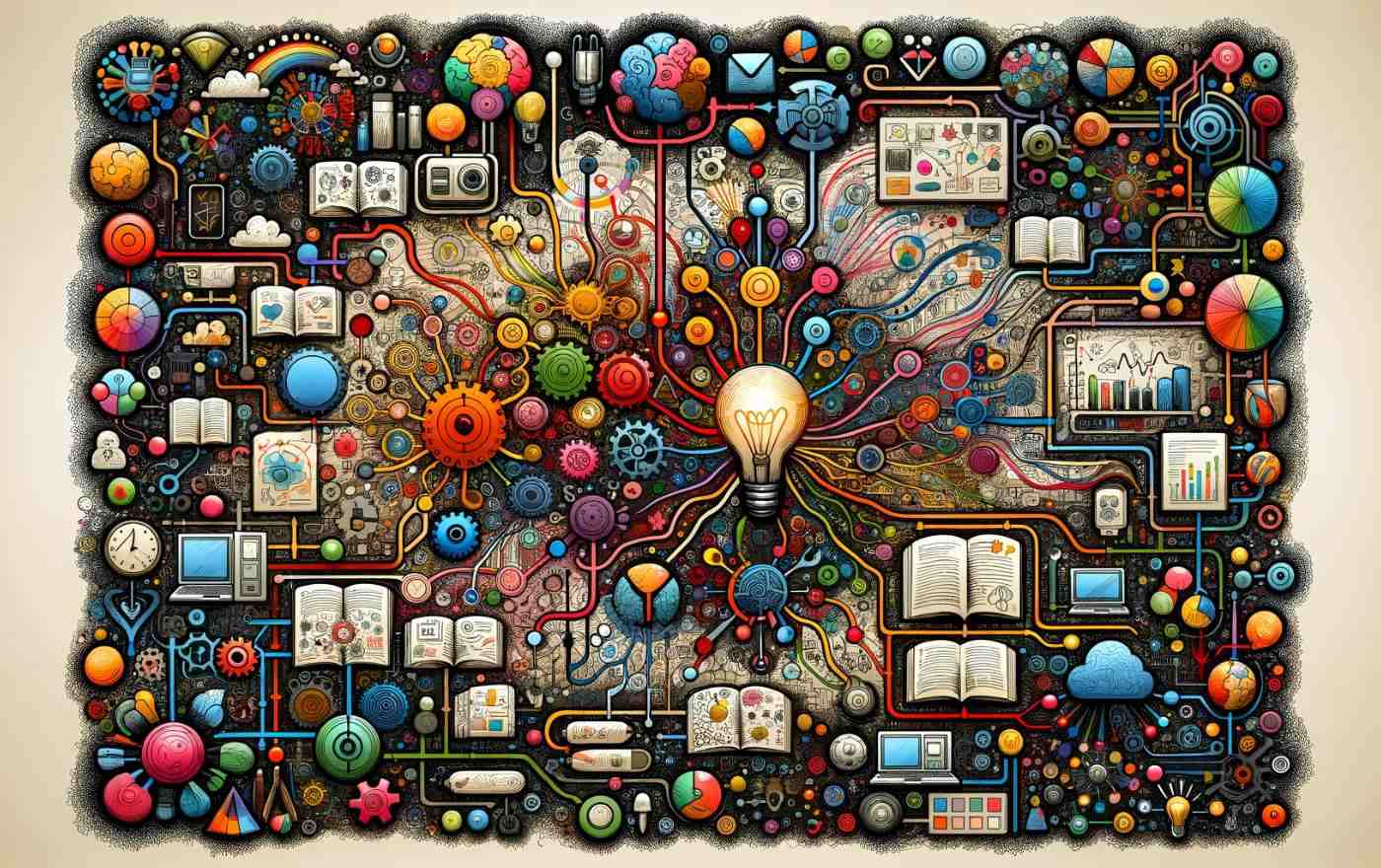
Why Teens Should Use Mind Maps
Mind mapping is a useful learning tool for teens. As a student, your mind is filled with ideas, thoughts, and information that can often feel cluttered and overwhelming. Mind mapping helps organize your brain and visually represents concepts and how they relate. Here are a few reasons why mind mapping is especially beneficial for teens:
▶ Improves memory. The visual nature of mind maps activates both sides of your brain, helping to strengthen neural pathways that aid memory and recall. When you need to study for a test, mind mapping the material will make it more effective in your memory than just reading notes or textbooks.
▶ Sparks new ideas. Mind mapping encourages creative thinking by revealing new connections between concepts and topics. As you map out thoughts, your mind generates new ideas, solutions, and insights. This kind of divergent thinking is a useful skill that will benefit you well beyond your school years.
▶ Connects topics. You learn about many isolated issues, facts, and events in school. Mind mapping helps identify relationships between these topics, weaving them into an integrated whole. Understanding how topics relate leads to deeper learning and comprehension.
▶ Improves focus. The act of mind mapping requires focused thinking. As you work on a mind map, your mind will become absorbed in exploring connections, finding the right layout, and generating new ideas. This focused state of mind can benefit other areas of your life, like studying, completing homework assignments, and working on long-term projects.
Mind mapping is a skill that will serve you well as a student and beyond. Once you use this tool in your learning and life, you’ll wonder how you got along without it. Give mind mapping a try—you have nothing to lose and everything to gain.
Mind Mapping Tips for Teen Students
As a teen, the responsibilities of school, activities, jobs, and life in general can sometimes feel overwhelming. Mind mapping is a visual technique that can help you organize your thoughts, see connections between ideas, and prioritize what’s important. Here are some tips to get the most out of mind mapping as a teen student:
Start with a Central Theme
Write the main topic or subject you want to explore at the center of your mind map. This could be a challenging class subject, an extracurricular activity, or a goal you want to achieve. The central theme is the foundation from which your key ideas will branch out.
Use Images and Color
Adding visuals like small pictures, icons, and color to your mind map will make it more engaging and help cement the ideas in your memory. You can draw simple doodles, print images, or use a mind-mapping tool. Color is also useful for categorization or highlighting important topics.
Keep it Brief
As a teen with a busy schedule, you want to be as concise as possible. Use just a few words for each idea rather than full sentences. Keep your mind map clear and avoid cluttering it with too much detail. You can always expand on key concepts in a separate mind map or outline.
Develop Branching Relationships
The power of mind mapping lies in the connections between ideas. As you add key thoughts, draw branches connecting related ideas. This helps you see how concepts are linked together in a visual map. Look for ways to join different branches as well. The more connections you make, your mind map will be more useful.
Leave Space to Grow
Mind mapping is an organic process. Leave plenty of blank space in your mind map to add new ideas and connections as they come to you. You may gain new insights into your central theme, leading to new branches. Extra space allows your mind map to become a living, breathing tool for gaining clarity and new perspectives.
Mind mapping can be an extremely useful skill for teens to develop. With regular practice, you’ll be able to tap into your brain’s ability to think visually and forge meaningful connections between the ideas that shape your life. Give it a try—you have nothing to lose and a new way of learning and problem-solving to gain.
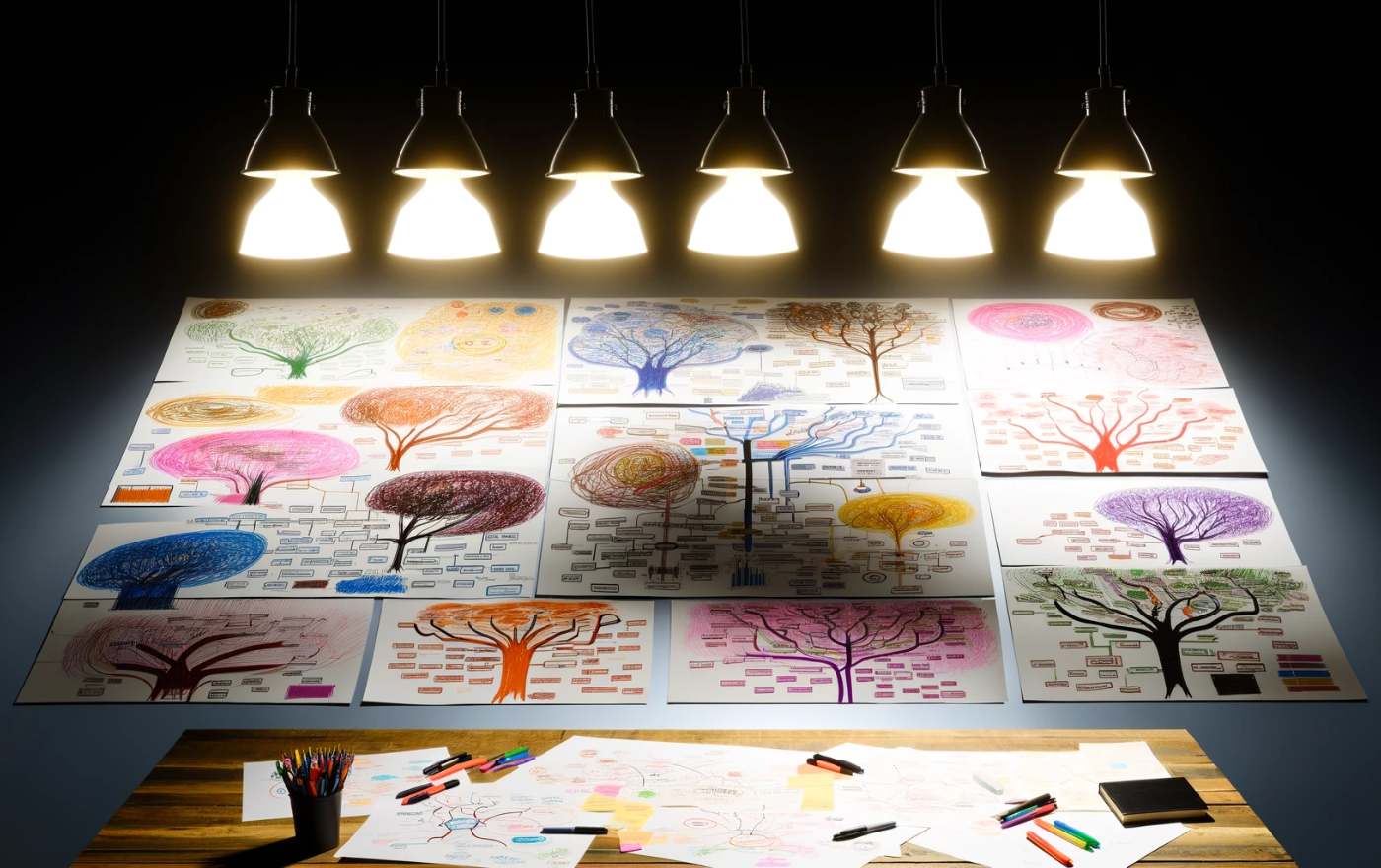
Mind Mapping Tools and Templates
Mind mapping is a useful technique for visualizing your thoughts and goals. The good news is that you don’t need fancy software to start—you can begin with pen and paper. However, when you’re ready to take it digital, many free mind-mapping tools and templates are available.
▶ Pen and paper: You only need a large sheet of paper, pens or pencils, and your imagination. Draw a circle in the center of the page and write your main topic or goal inside. Then, draw branches extending from the center to represent subtopics and ideas. Connect related concepts with lines. Get creative by using different colors and adding images. Take a photo of your finished mind map to refer to later.
▶ Coggle: This free online mind-mapping tool has a simple, intuitive interface. Just sign up for an account, and you can start adding topics, subtopics, notes, and images. Coggle offers templates to get you started and the ability to collaborate with others. You can also export your mind maps as images or share them via a link. Coggle is great for both school projects and personal use.
▶ MindMup: Another popular free option is MindMup. It has a minimal design and useful features like notes, attachments, and task lists. You can start from scratch or choose from many mind map templates. MindMup integrates with Google Drive to save and access your mind maps anywhere. The paid version adds more templates, themes, and collaboration options. MindMup works on all major browsers and platforms.
▶ Mind Mapping Templates: Once you choose a digital mind mapping tool, search for templates to provide inspiration or structure for your mind map. You’ll find templates for goal setting, brainstorming, project planning, and essay outlines. Customize the templates by adding or deleting branches and topics to suit your needs. Using a template can save time and spark new ideas.
With some experimentation, you’ll discover which mind-mapping techniques and tools work best for your learning and productivity style. The key is to start simply by writing down your thoughts and then organizing and connecting them visually. Mind mapping can help unlock creativity and gain a new perspective on any goal or topic.
Mind Mapping Examples for Teens
Mind mapping is a visual technique that helps organize your thoughts and see the big picture. As a teen, mind mapping can be an extremely useful tool for planning, studying, brainstorming ideas, or setting goals. Here are a few ways you can use mind mapping:
▶ Study notes. Create a mind map with your notes, summarizing key ideas and concepts. Add images, colors, and stickers to make it visually engaging. This overview will help reinforce your learning and make studying more fun.
▶ Brainstorming. Start with a mind map if you have an essay to write or a project to plan. Put your topic or subject in the center and add related ideas, thoughts, or questions that come to mind. Look for connections between ideas, and you’ll soon have a wealth of inspiration.
▶ Goal setting. What are your hopes and dreams for the school year or summer break? Make a mind map with “Goals” in the middle and branch out with specific and measurable goals like school, hobbies, friends, and personal growth. Review your mind map regularly to stay on track.
▶ Presentation planning. If you have a school presentation to organize, create a mind map to outline your key messages and flow of ideas. A visual layout will make the presentation easier to remember and help it flow logically. You can even refer to your mind map during the actual presentation.
The key to effective mind mapping is to start with a central idea and let your thoughts flow spontaneously using keywords, colors, and images. Don’t censor yourself or limit the number of branches. The more connections you can make, the more your mind map will be more useful. With regular practice, mind mapping can become an intuitive way of organizing your thoughts, leveraging your brain’s natural ability to think visually. Give mind mapping a try—you have nothing to lose and everything to gain!
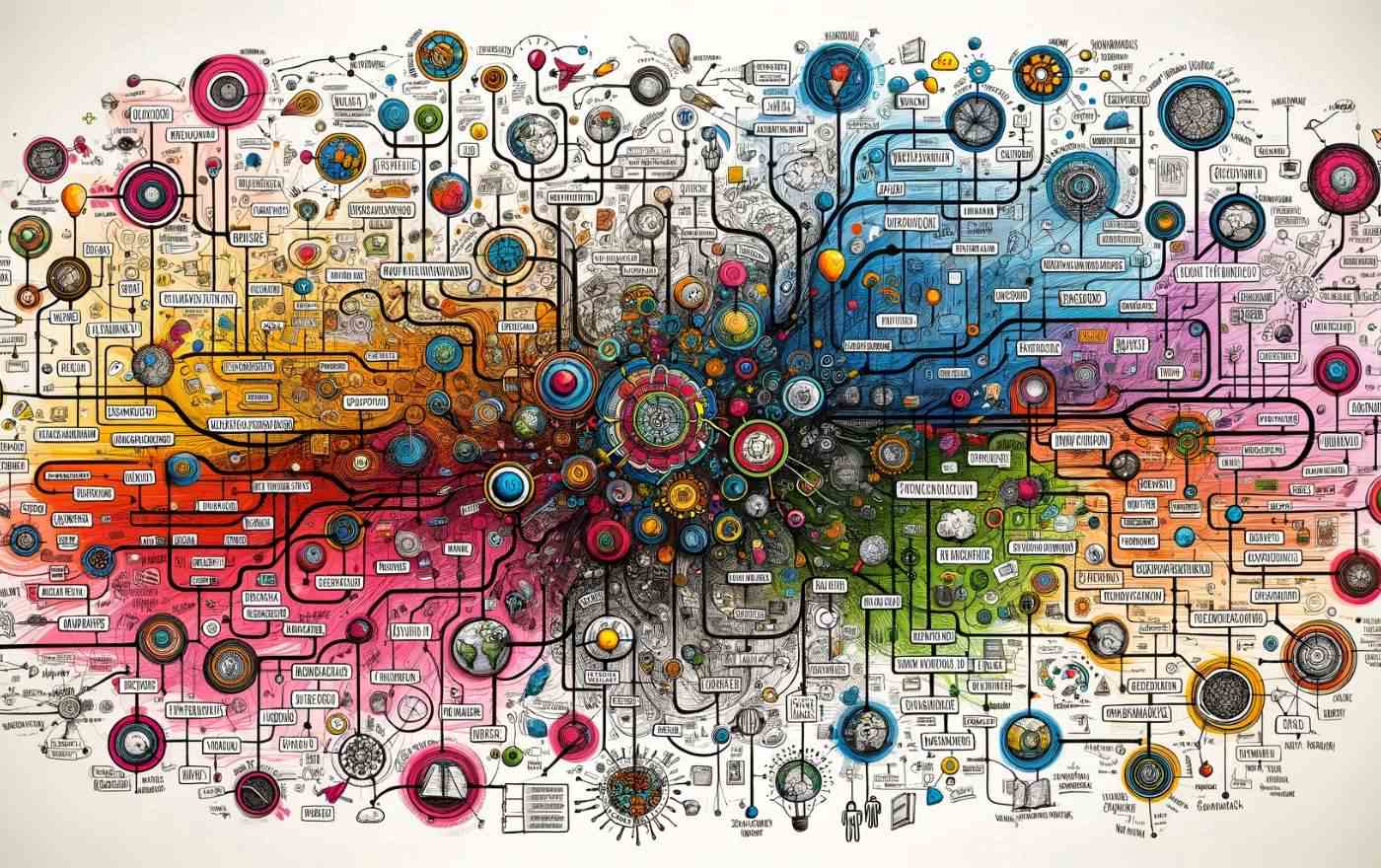
Conclusion
Mind mapping can be a game-changer if you take the time to try it out. Start small by mind-mapping your ideal weekend or a short-term goal. Once you get the hang of it, use this technique to map out longer-term plans like paths to career success or college choices. Keep an open mind, get creative with colors and drawings if you’d like, and see where this visual approach takes you! Who knows, you may uncover connections and possibilities you never considered before. I wish you clarity, focus, and achievement as you continue your journey!
Craig Selinger
Latest posts by Craig Selinger (see all)
- Psychotherapy and Support Services at Cope With School NYC - April 12, 2024
- NYC Parents of Teens Support Group - April 8, 2024
- Here I Am, I Am Me: An Illustrated Guide to Mental Health - April 4, 2024
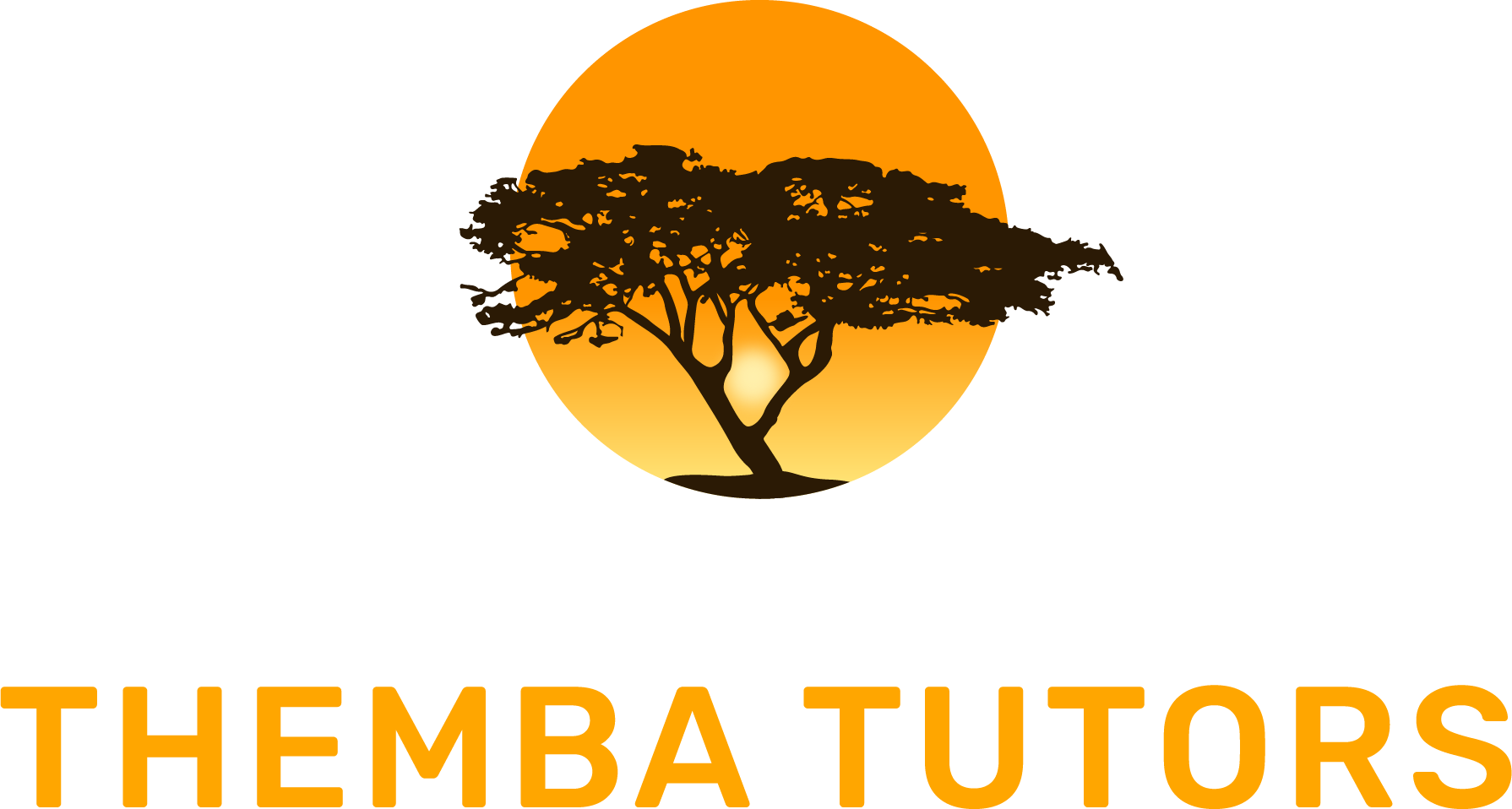

No Comments